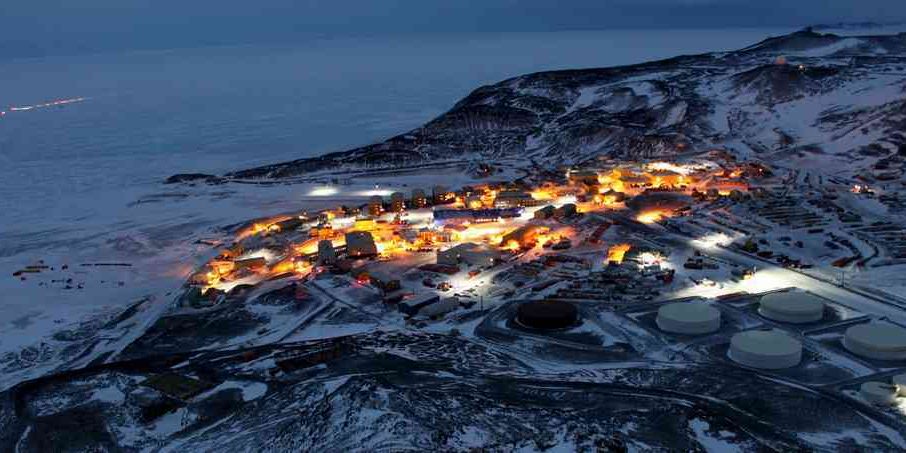Antarctica, the southernmost continent, is a land of ice and mystery. This frozen wilderness holds many secrets, waiting to be uncovered. Central to Antarctic research is McMurdo Station, a hub of scientific activity. This article explores the mysteries of Antarctica and the crucial role of McMurdo Station in unraveling them.
The Enigmatic Continent
Antarctica is vast and largely unexplored. It covers 14 million square kilometers (5.4 million square miles), almost twice the size of Australia. Ice blankets nearly the entire continent, holding about 90% of the world’s freshwater ice. Despite its size, it has no permanent human population. Only scientists and support staff live there temporarily, mainly at research stations like McMurdo.
McMurdo Station: The Heart of Antarctic Research
McMurdo Station, established in 1956, is the largest research station in Antarctica. It sits on Ross Island, near the continent’s coast. Operated by the United States, McMurdo can host over 1,000 people during the summer months. This station serves as a logistical hub, supporting scientific research across the continent.
McMurdo’s facilities include laboratories, dormitories, and a harbor. It also has an airfield, enabling flights to and from Antarctica. Researchers at McMurdo study various fields, from glaciology to astronomy. The station’s strategic location and comprehensive infrastructure make it a cornerstone of Antarctic exploration.
Unraveling Antarctica’s Mysteries
Subglacial Lakes and Hidden Ecosystems
One of Antarctica’s most intriguing mysteries is its subglacial lakes. These bodies of water, trapped beneath the ice, have been isolated for millions of years. Scientists have identified over 400 subglacial lakes, with Lake Vostok being the largest. These lakes may harbor unique life forms, adapted to extreme conditions. Research at McMurdo Station plays a vital role in studying these hidden ecosystems.
Antarctic Meteorites: Clues from Space
Antarctica is a prime location for finding meteorites. The ice and unique weather patterns trap and preserve these space rocks. Over 20,000 meteorites have been collected from Antarctica. Some originate from Mars and the Moon, offering valuable insights into our solar system. McMurdo Station supports meteorite research, providing logistics and resources for expeditions.
Ancient Climate Records: Ice Core Drilling
Antarctica’s ice cores are like time capsules, preserving Earth’s past climate. Scientists drill deep into the ice to extract these cores, which contain trapped air bubbles and particles. This data reveals historical climate patterns and atmospheric composition. Research at McMurdo Station contributes to ice core drilling projects, helping scientists understand climate change.
Volcanic Activity: Mount Erebus
Mount Erebus, located on Ross Island near McMurdo Station, is Antarctica’s most active volcano. It rises 3,794 meters (12,448 feet) and has a persistent lava lake. Studying Mount Erebus helps scientists understand volcanic activity in extreme environments. McMurdo Station supports this research, providing a base for volcanologists.
Lost Civilizations and Mythical Beasts
Antarctica’s mysteries inspire myths and legends. Some speculate about lost civilizations beneath the ice, fueled by ancient maps like the controversial Piri Reis map. Others tell tales of mythical beasts, such as the Antarctic Yeti. While mainstream science does not support these claims, they add to the continent’s allure. Researchers at McMurdo Station focus on scientific mysteries, but the legends continue to intrigue many.
The Future of Antarctic Research
McMurdo Station will remain crucial to Antarctic research. Advances in technology, such as autonomous vehicles and remote sensing, will enhance exploration. International cooperation, exemplified by the Antarctic Treaty System, ensures sustainable and peaceful research. This preservation protects Antarctica’s pristine environment for future generations.
Unlocking Antarctica’s secrets will reveal more about Earth’s history, climate, and life in extreme environments. The continent’s mysteries remind us of our planet’s vastness and complexity. They inspire curiosity and drive the quest for knowledge and exploration.
Antarctica’s mysteries and McMurdo Station’s role in scientific research are deeply intertwined. This enigmatic continent, with its immense ice sheets and hidden ecosystems, challenges our understanding of the natural world. McMurdo Station stands at the forefront of this exploration, providing the resources and infrastructure necessary for groundbreaking discoveries. As we continue to study Antarctica, we expand our knowledge and fuel the spirit of discovery that defines humanity. Antarctica mysteries and the McMurdo station are certainly interesting. Do you like mysteries? Try reading some of the Arctic books, such as Arctic Ave, Arctic Record, and Arctic Masons. Here is the Arctic Masons first chapter. Read for free.






